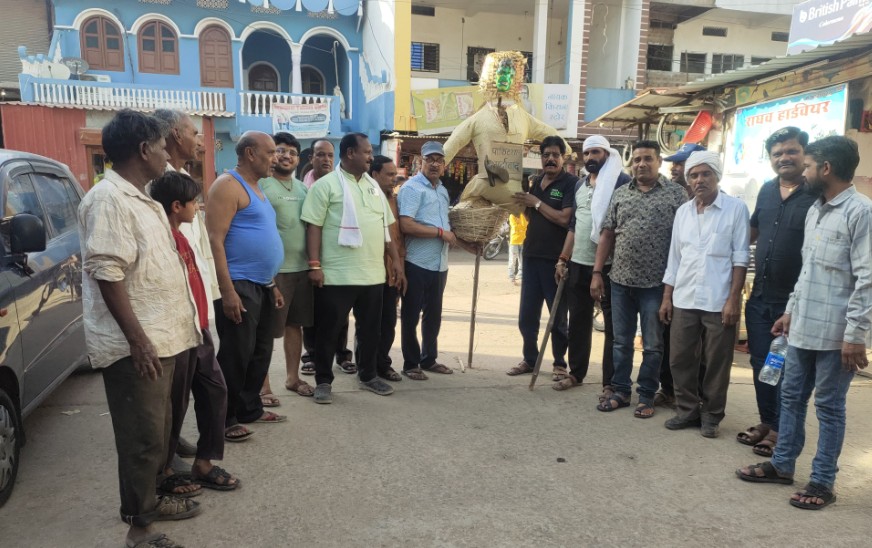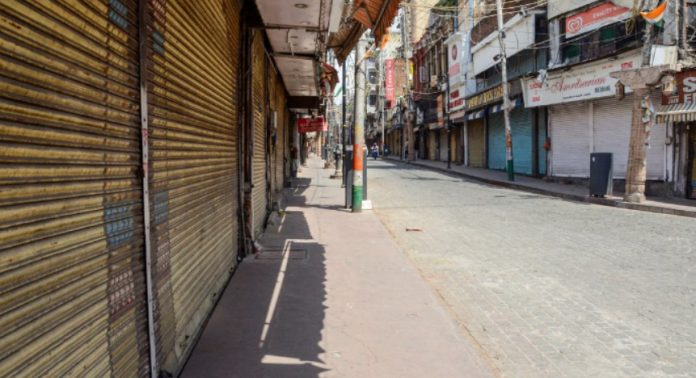In a powerful demonstration of collective grief, anger, and solidarity, Punjab’s Hoshiarpur and Kapurthala districts observed a complete bandh in protest against the tragic terror attack in Pahalgam, Jammu and Kashmir. The incident, which claimed the lives of several brave Indian soldiers and left many others injured, sent shockwaves across the nation. The impact was especially strong in Punjab, a state with a proud and emotional connection to the Indian armed forces. As news of the attack spread, various political parties, social organizations, and common citizens came together to express their condemnation and demand justice for the fallen heroes.
Shops and commercial establishments across the two districts remained closed throughout the day. Roads, which are usually buzzing with life and traffic, wore a deserted look. Educational institutions also remained shut, and local transport services came to a virtual standstill. The people of Hoshiarpur and Kapurthala sent out a unified message of resilience and national pride as they mourned the tragic loss of soldiers, many of whom hailed from Punjab itself. The silence that enveloped these towns spoke louder than words—a testament to the deep sense of loss and outrage felt by every citizen.
From early morning, members of various traders’ associations, market unions, and religious groups began gathering in town squares, holding placards and chanting slogans denouncing terrorism and expressing unwavering support for the Indian Army. These were not isolated gatherings; the participation was widespread and heartfelt, with youth, elders, and even children stepping out in the scorching heat to show their solidarity. Many people waved the Indian flag, some lit candles, and others offered prayers for the souls of those martyred.
The shutdown was not just symbolic; it reflected the pulse of a state that has long stood on the frontline—be it in times of war, peacekeeping, or internal conflicts. Punjab has sent countless sons and daughters to serve in the armed forces, and every loss is felt like a personal tragedy in the villages and towns of the region. The bandh served as a reminder of this strong emotional bond. Families whose members serve in uniform took part in the bandh, some holding back tears, others trying to console one another. Their pain resonated with the larger community, reinforcing the spirit of brotherhood and unity in the face of tragedy.
Religious institutions across faiths also played a significant role during the day. Special prayers were held in gurdwaras, temples, churches, and mosques, where spiritual leaders offered words of comfort and encouragement. At many places, people recited patriotic hymns and organized community langars to feed those who had gathered for peaceful protests. The atmosphere was one of unity across caste, religion, and political affiliations—a coming together of people under one tricolor.

Political leaders from various parties issued statements condemning the Pahalgam attack and lauding the courage of the security forces. Many leaders visited the protest sites, interacting with people and assuring them that the government would take necessary steps to bring the perpetrators of the heinous attack to justice. There was a consensus among leaders that acts of terror will not succeed in dividing the nation and that every effort will be made to uphold the integrity and sovereignty of the country.
Families of the martyrs were remembered and honored throughout the day. In many locations, their photographs were displayed with garlands, candles, and messages of tribute. Students from local schools and colleges took part in creating posters and writing letters of gratitude and condolence, which would later be sent to the families of the deceased soldiers. A few families who had lost loved ones in past military conflicts also joined the bandh, their presence evoking raw emotions among fellow residents.
Amidst the somberness, there was also a determined call for stronger national security measures and better protection for soldiers serving in sensitive regions. Some protestors carried banners demanding policy reforms and increased support for the families of martyrs. Many voiced the opinion that it was time to take a firmer stand against state-sponsored terrorism and those aiding such acts from across the border. While the protests remained peaceful, the passion and sentiment behind the slogans and speeches reflected a deep yearning for justice and accountability.
Social media too was abuzz with images and messages from Hoshiarpur and Kapurthala. People shared photographs of shut markets, candlelight vigils, and protest marches, using hashtags to spread awareness and amplify the message across the nation. Videos of emotional tributes and community gatherings went viral, drawing messages of support and empathy from across India.
The bandh concluded in the evening with a candlelight vigil at major intersections and parks. People gathered in silence, forming human chains and praying for peace. National anthems were sung in unison, and the evening sky lit up with candles and mobile flashlights, symbolizing hope and collective strength.
In retrospect, the bandh in Hoshiarpur and Kapurthala was more than just a protest; it was a moment of catharsis for an anguished population. It was a clear statement that terrorism has no place in a civil society and that the people of Punjab, and indeed the whole country, stand firmly with their armed forces. The incident served as a poignant reminder of the sacrifices made by our soldiers and the resilience of the Indian spirit.
As the towns slowly returned to normalcy the following day, the memories of the bandh continued to linger. Citizens resumed their daily routines, but with a renewed sense of national pride and unity. For many, the experience of standing shoulder to shoulder with neighbors, friends, and even strangers during a moment of national mourning served as a powerful affirmation of what it means to be Indian. The solidarity witnessed on the streets of Hoshiarpur and Kapurthala reaffirmed the enduring values of compassion, courage, and community that define the heart of Punjab.


